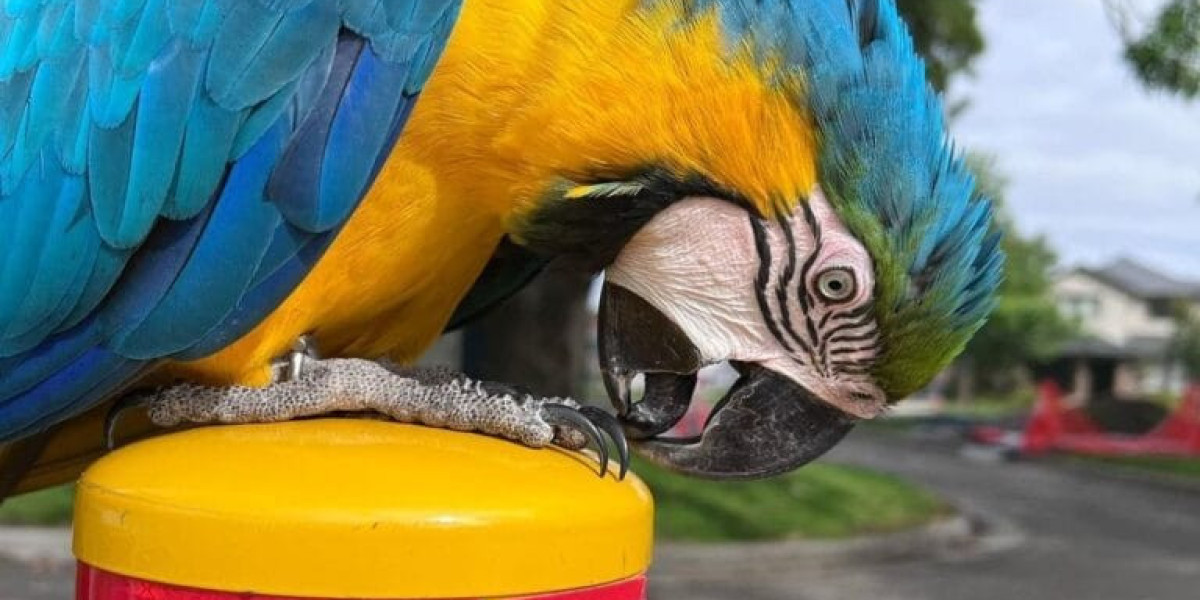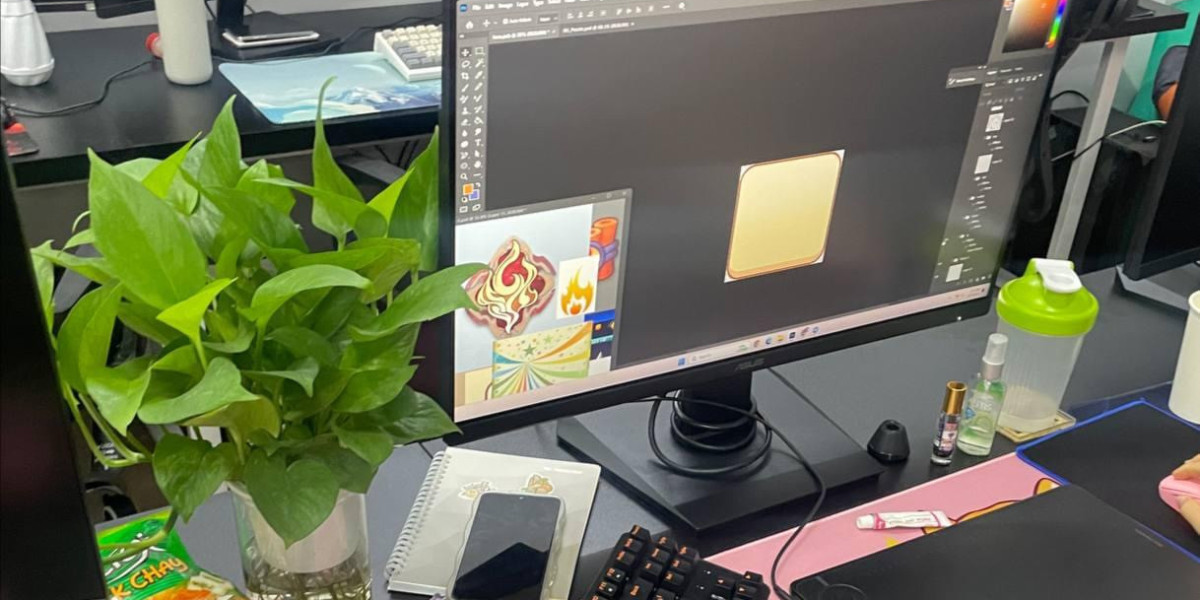 Macaws typically pick a mate for life and spend the majority of their time together sharing food grooming, and taking care of young. Unfortunately, these majestic birds are teetering towards being extinct in their habitat.
Macaws typically pick a mate for life and spend the majority of their time together sharing food grooming, and taking care of young. Unfortunately, these majestic birds are teetering towards being extinct in their habitat.Humans' destruction of habitats as well as the trade in cage birds and poaching pose a major threat to this beautiful species.
Great Green Macaw
The magnificent green Macaw (Ara-ambiguus) is one of the largest parrots of Central America. It is also among the most striking and vibrant birds found in the canopy of the rainforest. Its vibrant green plumage is complemented by the red of its forehead and blue on its lower back, rump and tail feathers. The tail and wings are both long and pointed that allow it to glide easily through forest canopies. Its beak is long and sturdy, well-suited to break open seeds and nuts. The great green Macaw is a predator and, therefore, plays an important part in maintaining healthy rainforest ecologies. Its seed dispersal allows tree species such as the maiz biological tree Dipteryx Oleifera to flourish and provide food for other species of animals.
The majestic birds are typically often seen in small groups and spend most of their time in the forest canopy searching for fruit, nuts, and www.Buy-macaw.com seeds. They are known to nest in hollow tree cavities, which they usually cover with branches and grass. Females will lay two to three eggs, which she will incubate between 26-28 days. After the chicks hatch the male helps to feed them.
Captive great-green macaws are excellent companion animals. They are playful, intelligent birds. It is essential to remember that these animals require plenty of space, time, and attention to thrive. They are susceptible to biting and could be destructive when bored. They are also prone to health issues like proventricular dilatation or macaw wasting.
The great green macaw is declining, just like many other species in the tropical zone. Their habitat is being destroyed by mining, logging and agriculture as well as cattle ranching. The illegal wildlife trade and hunting for food is also affecting their numbers.
Protecting the habitat of these incredible animals is the only way to ensure their survival. Creating corridors between protected areas will allow them to move around freely and access a variety of different foods sources. In the end, preserving the natural habitats of these beautiful birds will aid in protecting other species that live in their homes.
Blue and Gold Macaw
This gorgeous bird is among the most loved parrots in captivity all over the world. It is smart and affectionate. It is also very active. It requires a lot of interaction and education, but can be a wonderful companion if well-trained. Macaws can be aggressive when not properly trained or provided with clearly defined boundaries. It is essential to find an experienced trainer who knows how to handle large bird and is able to teach tricks. Dave and Jamieleigh of BirdTricks have put together an excellent video that shows how to hand tame the Blue and Gold Macaw. They share some tips, tricks, and methods to assist anyone who wants to train a macaw so that it is a pleasure to interact with. Click HERE to view their video.
Blue and gold macaws part of the parrot family, are neotropical neotropical bird species native to tropical Central America and South America (especially habitats with varzea) and woodland and savannah habitats as well as Trinidad and Tobago. They have mostly blue dorsum and tail feathers with accents of yellow or gold and gradient hues of green on their heads. Their wings and wing coversts are blue with green highlights. Their feet are zygodactyl, with two toes facing forward and two facing backwards. This adaptation allows them to grasp branches with ease.
These birds are monogamous and pair for life, and they remain together during breeding season. They dig up tree cavities with their powerful beaks to build nests. They usually lay two or three eggs and incubate them for a period of 25 days. Once hatched the chicks born altricial are fed through regurgitation by both parents until they are able to care for themselves.
They are intelligent birds who communicate a variety of emotions through a variety of vocalizations. They also exhibit a range of courtship behaviors, like the cocking of their heads and flirting by raising their wings and blushing. They also show their emotions by swaying their tail feathers and bowing, prancing, and bobbing.
They are also playful and they are fond of chewing toys. Therefore, it is recommended that owners offer an assortment of sturdy, bird-safe toys that can be able to withstand the force of their jaw muscles. This will keep their teeth healthy and prevent them from developing excessive plaque and tartar.
Red-shouldered Macaw
Sometimes referred to as the Hahn's Macaw, this small bird is one of the most intelligent macaw species. It is a good talker and can master many tricks. It's also calmer than other macaws, making it a good choice for people who may be concerned about a loud parrot. It may be little nippy in the beginning, but generally gets over it and can be very playful as an older parrot.
This bird is native in swamplands and savannahs as well in tropical lowland habitats all over Brazil, Venezuela Guyana and South-Eastern Peru. Its vibrant green coloring is ideal to hide in the foliage. It lay between two and five eggs that are incubated for a period of 24 days. After about two months the chicks are ready to grow. The species usually has a long-term relationship and is often found in pairs.
In its natural habitat, it hunts for berries and flowers and seeds, nuts, fruits and leaves. These birds are known to eat insects too. These birds are also known to gather near clay cliffs. It is believed that this will help them remove any toxins they may have ingested while eating their usual meals.
Hahn's Macaws can be prone to self-mutilation, feather plucking and nutritional disorders. They are also susceptible to proventricular dilatation and enlarged beaks. However, a balanced diet, regular veterinary checkups and proper cage maintenance can stop these issues from forming.
The bird can live for up to 50 years in captivity. It is not usually sold in large pet shops however, it is available in avian-specialty stores and from breeders of birds. It has a high intelligence level, however it can be challenging for those who are new to training. It is a very good speaker, and can be trained to whistle or clap, as well as dance.
Hahn's Macaws can be extremely loud and are not recommended for apartments living. They require a large cage with plenty of perches, several large food bowls and plenty of space to exercise regularly outside of their cage. They are also very strong chewers and need an enclosure that is safe.
Blue and yellow Macaw
The Blue-and-yellow Macaw (Ara ararauna) is a stunning, large, tropical parrot. Like other Macaws is monogamous, and pairs for life. It also has a strong inclination towards mimicry and can make it a great companion bird.
This species is native to South America, and can be found in various habitats. Cloud forests, savannas, and rainforests are all possible habitats. IUCN has declared the Blue and Yellow Macaw endangered and conservation efforts have been launched to safeguard this beautiful bird.
The birds are able to breed once they reach the age of 3 or 4 years old. They are known to be a pair for life, and will remain bonded until one of the partners dies. The Blue-and Yellow macaw typically lay two to three eggs in one nest. The eggs are hatched by the female and males will aggressively defend the nest. After the chicks hatch, they become altricial, meaning they have to rely on their parents to feed them until they are capable of feathering themselves and feed themselves.
In the wild, Macaws are social birds and are often seen in a swarm of parrots and Macaws. They are intelligent and can learn a variety of sounds. The Blue-and-Yellow is a proficient flyer and can be seen soaring through the canopy of the forest and performing other impressive aerial maneuvers.
The Blue-and-Yellow macaw is a stunning and captivating creature. It is a wonderful option for those looking for a pet who will provide companionship and entertainment.
This gorgeous large tropical parrot is native to South America. It is a monogamous bird that mates for life, and is inclined towards mimicry. It also has a strong tendency to form bonds with humans, and is able to learn many different words and phrases.
The Blue-and-yellow Macaw is breeding when it is between 3 and 4 years old. Blue-and-yellow Macaws be a couple for the rest of their lives and live in small groups. The Blue-and-Yellow species can be found in many habitats, including cloud forests and savannas. The Blue-and-yellow prefers to nest in tree cavities, which they dig out with their powerful beaks. The female will lay between 2 and 3 eggs. Then she will incubate them for around one week.







